Best Mattress Reviews For Sedentary And Inactive Lifestyles
As much as we’d all like to deny it, the vast majority of us lead sedentary lifestyles void of physical activity. If any of us were transported suddenly through time to the 18th century to perform the typical labor of the day, we’d likely not make it through the first three days.
Grinding physical labor, and even administrative positions in previous centuries, involved a daily lifestyle filled with physical tasks such as handling animals needed for transportation, harvesting and preparing food for our families, and clawing our way through each day.
Two hundred years ago, there were probably no sleep disorders that kept us awake at night, simply because exhaustion and fatigue overwhelmed any of these issues and zonked us out as soon as we dropped to our straw beds.
Because our lives typically involve very little physical activity, and we spend most of our time sitting motionless in front of blue screens rather than engaging in movement, a whole encyclopedia of medical problems has arisen that not only deprive of us valuable sleep time, but also disrupt the quality of sleep we enjoy.
Lack of physical activity, according to an article by Medline Plus, creates a host of medical problems, including poor sleep, restlessness, and inadequate restorative rest:
You burn fewer calories. This makes you more likely to gain weight. Gaining weight creates a cascading effect of other health problems.
You may lose muscle strength and endurance, because you are not using your muscles as much. Sitting all day compresses nerves, strains our cardiovascular system our lymphatic system, and prevents tissues from being properly oxygenated. This in turn, creates fatigue.
Your bones may get weaker and lose mineral content.
Your metabolism may be affected, and your body may have more trouble breaking down fats and sugars.
Your immune system may not work as well.
You may have poorer blood circulation and reduced oxygenation of tissues.
Your body may experience more inflammation than active people.
You may develop a hormonal imbalances that can lead to enhanced medical problems.
You may have a higher likelihood of experiencing cancers such as breast, colon, and uterine cancer.
While making some life changes like working out, disconnecting and unplugging, and spending more time getting direct sunlight in natural environments is necessary, immediate relief can often be provided if you are sleeping on the right mattress.
And, you might be able to heal many of the issues caused by an inactive and sedentary lifestyle by simply improving the quality of your sleep, since your body repairs itself and reboots during deep REM sleep. If you don’t have the right mattress, you could be missing out on this wonderful healing tool that evolution has provided for you.
For many who pursue sedentary lifestyles with limited physical motion, the benefits of a mattress that promotes wellness is extremely important. For those who are not sedentary by choice, and are confined to bed for long periods of time, choosing the right mattress often influences lifespan, too.
Best Mattress Options For Inactive People: We Narrow Down The Options
Shopping for a mattress is a complex and daunting task. If you are intending to buy online, you join about 55% of mattress shoppers in the U.S. who would rather not visit a brick and mortar retail store, but the downside is that you’ll be overwhelmed with hundreds of choices.
We can narrow down your options to just a handful of mattresses that are designed to heal, rejuvenate, and restore your body, even if you are not hitting the gym, running, walking, or engaging in strenuous exercise.
Of course, there are various mattress types available in the market, the most common being innerspring, memory foam, latex, or a hybrid version of those (more than one component included).
Virtually all mattresses sold online are designed to be compressed and vacuum packaged, shipped to you, and unfurled and deployed in your home, and are often made from state of the art foam layers that provide excellent support and comfort.
People with sedentary lifestyles often complain most about posture defects, back pain, and weight-related issues. On our best beds for obese people page, we discuss in detail, what kinds of issues confront people of stature, and how a mattress designed for them can make sleep, and wellness, a whole lot more accessible.
Which mattress type is most suitable for folks that are typical weight and heights and are not obese, but simply lead sedentary lifestyles?
Coil Or Innerspring Mattress Option
Coil, or innerspring mattresses, are what most of us are used to, and if you are over 40, likely the only kind of mattress you’ve ever slept. It’s almost like an American tradition, though innerspring mattresses are kind outdated, even archaic, when you compare them all of the specialized therapeutic and beneficial foam components that are being used in today’s state of the art mattress.
Depending on the quality of metal springs used in the innerspring mattress, and how they are woven togethers, innerspring mattresses can relieve pain because they tend to be more supportive and provide strong pushback against heavier loads, as well.
For sedentary people trying to relieve pain, or to relax muscles and reduce pressure, old school coil type mattresses usually need to be combined with a foam ingredient, like memory foam, latex, or a firmer polyurethane foam.
Also, the coils need to be individually pocketed for best results, which means they are not woven together in a rack, or bonnell, style system. If they are pocketed coils, they are much better and motion dampening, too. Motion transfer is a real problem when it comes to uninterrupted sleep and the old style of woven coils can prove to be a real negative.
For coils, look for a hybrid mattress that combines the support of coils with the softer, more yielding benefits provided by memory foam or latex. We’ve included several hybrid mattress options below to consider.
Natural Latex Mattress Options
A latex mattress, especially a natural latex mattress, is an excellent choice when it comes to best mattress options for those struggling with sedentary lifestyles. It is fairly firm, has long lifespan without sinking or settling and developing ruts, and it has a super fast response time.
When you move on natural latex, it immediately pushes back, unlike memory foam which while conforming to your body and creating a nest like sensation, buoys you and keeps you from feeling like you’re stuck in your mattress.
Response time of a mattress is its ability to regain its original shape. You can easily test this by pressing your hand into a natural latex mattress and then releasing it. The mattress will take very little time to regain its original shape.
Memory foam, which is more effective at pressure point reduction but does have a more “snuggled” feel that some people don’t like, has the signature hand print effect, retaining the shape of your body once you move from that spot.
If you tend to move around a lot at night, and need to sprawl, natural lates is a good fit and you won’t wake up during these events since natural latex is so easy to move around on. You won’t feel trapped and will be able to get out of bed rather easily.
Memory Foam Mattress Options
What is it about a memory foam mattress that makes it a great option for people with sedentary lifestyles? First, these mattresses flawlessly conform to the body shape of the sleeper. Literally, the material melts ups round your body to encase it, creating a nest-like sensation.
Pressure points are drastically reduced around the sleeper’s neck, shoulders, and hips, because memory foam is highly effective at distributing weight sideways, away from the body.
Memory foam may help reduce the likelihood of blood clots and help oxygen move efficiently into the nooks and crannies of your body by distributing pressure equally rather than in pinpoint areas like other mattress materials might do.
A memory foam mattress accommodates all sorts of sleeping positions., Whether or not you sleep on your stomach, back, or side. Even if you change your sleeping position through the night, the mattress will adapt to your body shape regardless, and give you a good sleep.
However, when purchasing a memory foam mattress, you need to make sure the brand has incorporated a cooling technology into its design to provide air and heat ventilation, as they can sleep hot.
I always recommend that hot sleepers choose natural latex or a specialized cooling gel foam/memory foam combination, since most heavier people sleep hotter, simply due to the increased surface are of their bodies.
Most of the mattresses we suggest on this page have these features integrated into their design, providing cooling relief by either actively moving air, withdrawing body heat, or by minimizing body contact with the surface of the mattress.
Apart from getting yourself the right mattress, you also need to make certain lifestyle changes to ensure better sleep. Disconnecting from the virtual world an hour before sleep goes a long way in ensuring you sleep well. Try it for a month and let us know how it went.
How Does Lack Of Exercise Affect Sleep Quality And Performance?
Have you experienced insomnia or an overwhelming feeling of exhaustion for much of the time? Instead of running to your doctor for an Ambien prescription or nosing through over-the-counter sleeping pills at your drug store, you may want to consider getting some serious aerobic exercise.
It’s as simple as getting your heart rate up and moving around. Exercise is a natural remedy that will absolutely have an effect on how you sleep, how long you sleep, and getting that deep REM stage sleep that heals and restores. Proper nutrition, physical activity, and a mattress suited to your lifestyle are simple solutions for achieving restorative sleep, so you wake up feeling refreshed and ready to start the new day.
Recent findings from a 2017 Consumer Sleep Survey demonstrated that lack of exercise reduced consumers’ ability to get a good night’s sleep. Using blue screen electronics was another culprit that negatively affected the quality and amount of sleep obtained by people leading sedentary, inactive lives.
The survey findings revealed a startling connection between a lack of exercise and poor sleep quality. Almost 50% of respondents said they almost never pursued exercise, and only 11% of people who don’t work out reported that they get enough sleep.
The type of exercise also affects sleep, aerobic exercise, as those who participate in high-impact activities like cardio, running, and CrossFit already know, reported getting enough sleep at twice the rate of those who engage in low-impact exercises.
Exercise improves sleep quality as well as how long you sleep. What time of day you get your physical activity is also a significant factor. For some people, heading to the gym or working out at home too close to bedtime made it harder to fall asleep because they had too much energy. If this is the case, a morning or early afternoon workout is the best time to hit the trails for a run or a quick trip to the gym.
Other people noted that the extreme exhaustion from a vigorous workout helped them to fall asleep as soon as they laid their head down. It’s important to listen to your body and find what works best for you. Remember what we talked about up top? Living before the 21st century was a natural sleep-inducing lifestyle.
Just like paying attention to your body about exercise, a mattress deserves the same level fo attention. It’s important to find a mattress that will allow you to achieve peaceful, restorative sleep.
The proper amount of support, materials used in the mattress, and the firmness level should be matched to your specific body so you can quickly achieve the restorative sleep you need.
If you exercise regularly and are still experiencing a poor night’s sleep, it’s likely time to invest in a new mattress. Here are our suggestions for mattresses if you live a sedentary lifestyle- but are looking forward to improving both the quality of your sleep and the shape of your body.
our selection of best mattress options for sedentary and inactive lifestyles
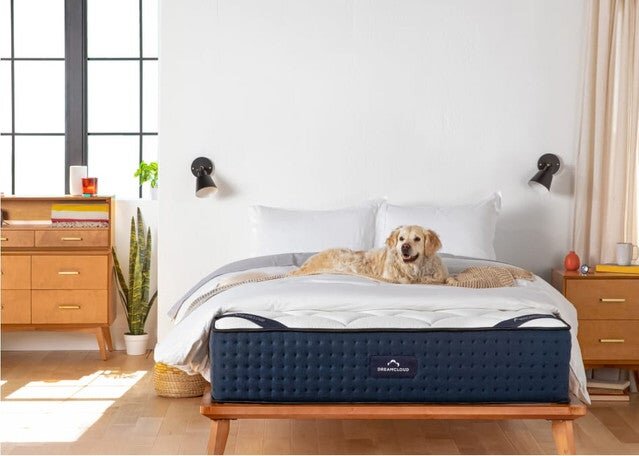
For the money, one of my top choices. The Dreamcloud Luxury Hybrid Mattress has a sumptuous cashmere quilted top that hugs you, and a thicker layer of gel infused memory foam beneath. Individually wrapped coils lift you so you don’t get buried in your mattress.
I’ve recommended it to hundreds of consumers. Excellent edge support, minimizes motion transfer. With my link, you’ll get $200 off, a free sheet set, 2 pillows, and a mattress protector. A queen on sale: $899, free ship, 365 day trial. I’ve compared to retail store brands selling similar models for $3,000 and up.
Mar 20, 2019
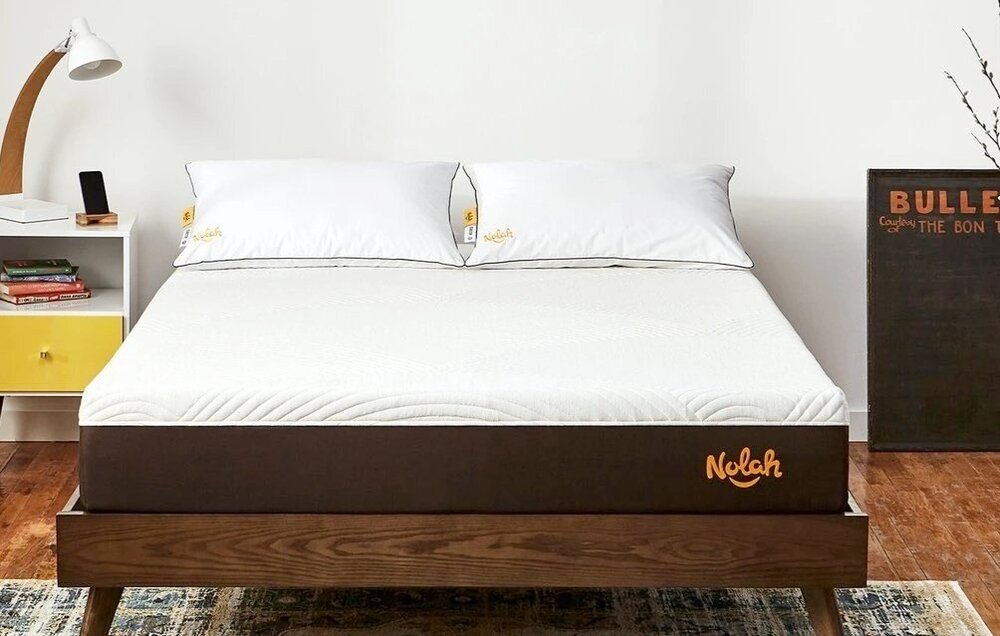
Soft and sumptuous, and built for side and side/back sleepers, The Nolah Original 10” Bed is made with greener, cleaner foams. Their AirFoam™ layer sleeps cool and cozy and is excellent for shoulder pain. Nolah engineers claim this bed is proven to provide 4x better pressure relief on hips, shoulders, and back. Get two free pillows with my link. A solid lifetime warranty, and 120 night no questions asked trial.
Mar 20, 2019

Want a chemical free sleep surface? This outstanding natural latex hybrid bed is loaded with clean, chemical free ingredients.
Up top, there’s a breathable organic quilted top, and beneath you, your body floats on 4” of botanical Dunlop latex (Sri Lankan grown trees, best on the planet). Individually pocketed coils suspend and hover you, no sinking or rutting.
Free sheet set, 2 free latex pillows, and mattress protector included.Delivered with 365 day no questions asked trial , lifetime warranty. My #1 Hybrid Pure Latex/Coil Choice.
Jan 11, 2020

I’d call it an outstanding natural mattress that delivers supernatural comfort and levitating support. An organic outer quilted cover, a layer of eucalyptus infused rayon that cools.
An immediately responsive, 3” layer of pure botanical latex hovers above a pocketed coil system that evenly supports your body.
Owners note excellent lower back support. Queen $999, 25 year warranty, 100 night no BS trial. Couples, back and belly sleepers, unite! Click here to buy.
Jan 21, 2020
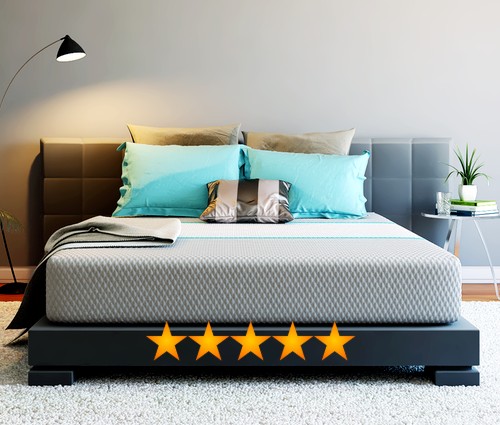
A uniquely designed foam hybrid mattress that offers a moderate degree of plushness and support. Copper infused foam provides antibacterial qualities. 10” finished height, 100 night trial, 20 year warranty, $950 for a queen. Free shipping. CLICK HERE FOR THE BEST DEAL and to check them out. Very forward thinking mattress system. Marc’s comments: Their secret: one of few companies online that uses their own factories, not pimping out their manufacturing to 3rd party fabricators. The benefit: Better ingredients since they own the whole enchilada and don’t have to sacrifice quality to pay the middleman.
Jul 24, 2019

Two models, delivering best in class pressure relief, precision spinal alignment, with a sumptuous, nest-like feel. Uses top of the line luxury components and textiles, safer, low VOC and formaldehyde free Certi-Pur foam. A side and back sleeper’s fantasy mattress. Get $300 off + w FREE pillows, free shipping, a great trial period, with unbeatable warranty. Our #1 Choice For Overall Best Mattress. 4.9 Rating out of 5, from a total of 6,572 Online Reviews.
Mar 20, 2019
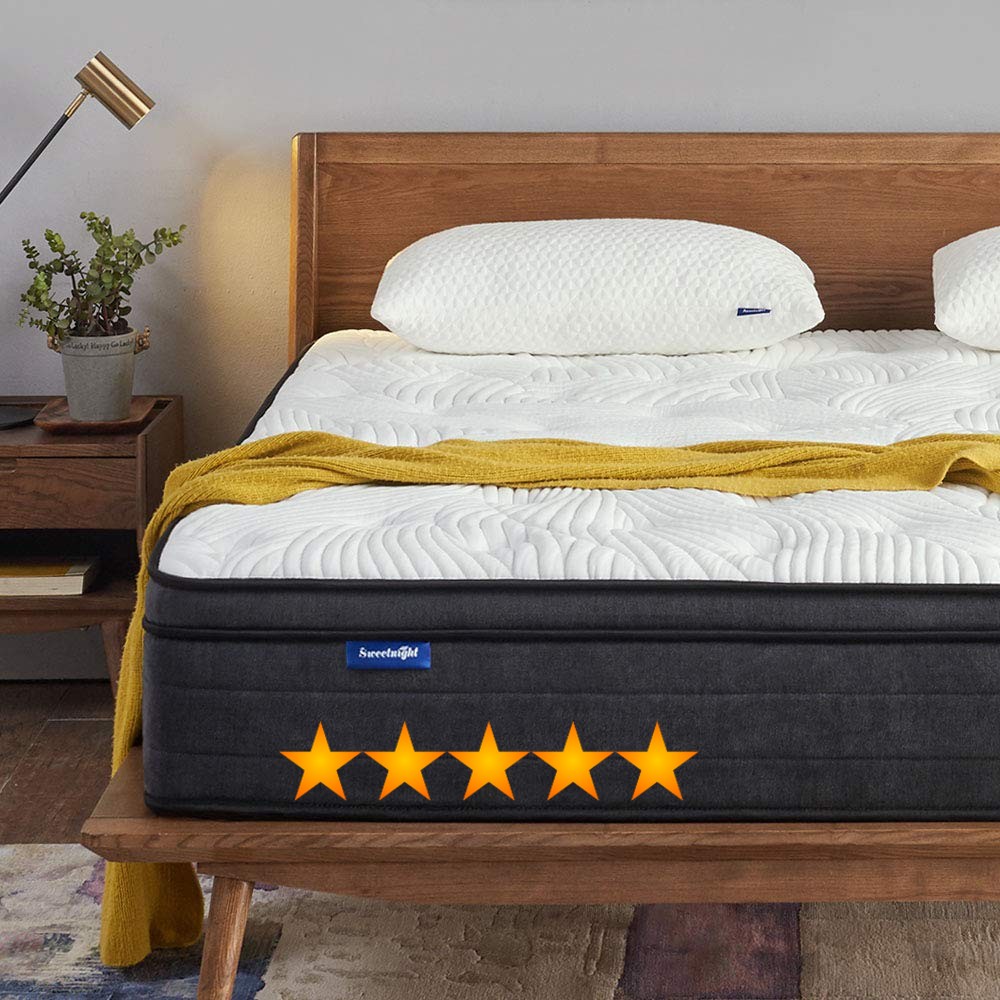
A wonderful hybrid mattress without all of the middleman costs. $598 for a king size bed. Individually wrapped pocketed coils, and a unique hybrid foam layer system above providing bouncy yet pressure relieving and a cool to the touch knit outer cover. We like the quality of the gel foam used in this Texas made brand. 96% of customers keep this mattress, and with a solid 10 year warranty, you can’t go wrong. Great for side sleepers and nest sleepers. Click here to get the deal. A third of the price of identical “BigMattressInc” beds.
Apr 20, 2019

Habitat Furnishings offers the best digital sleep number style airbed on the market. For half the price of the big name brand, you’ll get a mattress that lets you control an infinite range of soft to firm settings. The bed is made with both natural latex and premium memory foam, and includes a quilted bamboo comforter top built right in! LED remote controls with memory setting. Sale offers $1200 off everyday prices. 90 Day Free Trial, solid warranty, made in USA!
Jun 16, 2020
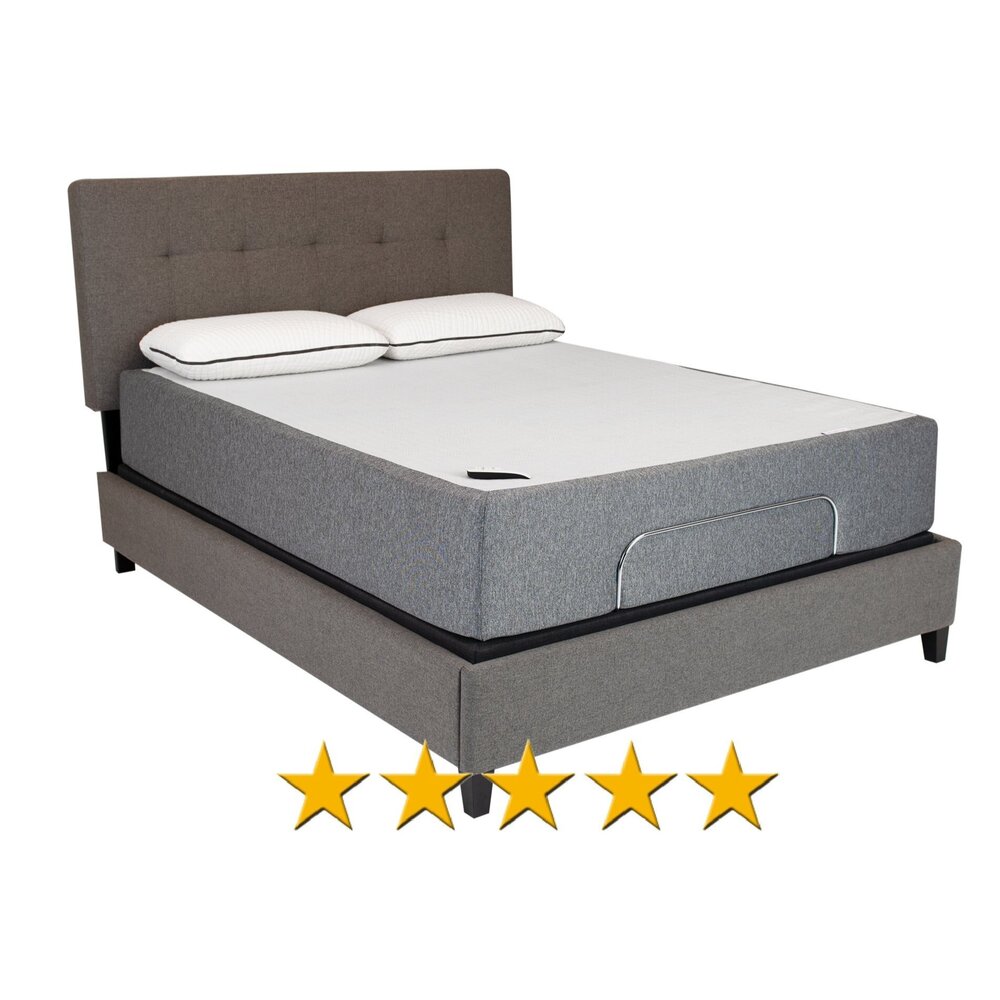
Hybrid mattress featuring EMF and 5G radiation shielding system. FDA backed technology using static and charge removal surface. Detox, remove free radicals, and get restorative and recharged rest. An “information age” bed. Order the Anti-Aging Bed® or cover only for existing mattress. Click here to visit and to order.
Apr 6, 2020
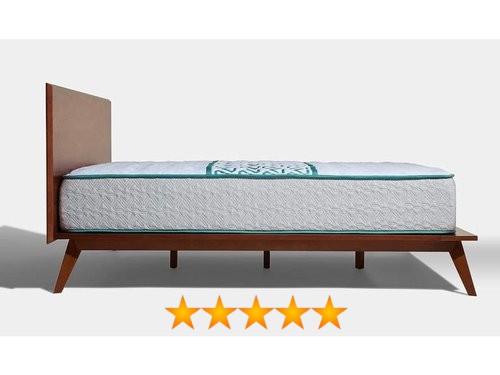
Looking for great support, especially at hips and shoulders? Our team loves this unique coil and foam hybrid. Gel memory foam on top, a pocketed coil system below with zoned support for torso and hips. A unique feature: a foam edge which provides perimeter support for sitting and increases usable space on the mattress. Queen size $999, 120 Night Trial. A+ marks. Check out their full product line up here.
Jul 17, 2019